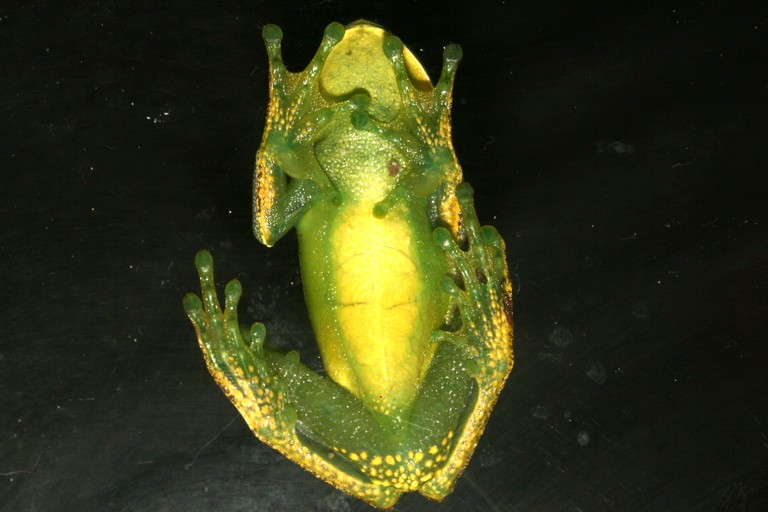Bocaina tree frog
A species of Canebrake tree frogs Scientific name : Aplastodiscus albosignatus Genus : Canebrake tree frogs
Bocaina tree frog, A species of Canebrake tree frogs
Scientific name: Aplastodiscus albosignatus
Genus: Canebrake tree frogs
Content
Description General Info
 Photo By Diogo B. Provete , used under CC-BY-SA-2.5 /Cropped and compressed from original
Photo By Diogo B. Provete , used under CC-BY-SA-2.5 /Cropped and compressed from original Description
Aplastodiscus albosignatus is a species of frog in the family Hylidae. It is endemic to Brazil. Its natural habitats are subtropical or tropical moist lowland forests, subtropical or tropical moist montane forests, and rivers. It is threatened by habitat loss.
General Info
Lifespan
10-15 years
Diet
Bocaina tree frog primarily feeds on small invertebrates, preferring those that inhabit forest floors, such as ants and beetles. Its diet richness hinges on the biodiversity of its tropical habitat.
Appearance
Bocaina tree frog is a medium-sized frog with a smooth skin. It possesses unique brick-red and white mottling on its back and sides, and a white underside. Males are smaller than females with an approximate length of 42mm. It lacks any type of horns, wings, or tail. Unlike many frogs, it doesn't undergo major physical changes throughout its lifecycle.
Behavior
Bocaina tree frog is predominantly nocturnal, actively foraging in the darkness for invertebrates. This solitary species breeds in water bodies, employing a unique vocal communication system during mating. Known for their territorial disposition, males assert dominance by expanding their vocal sacs to ward off potential rivals. Significantly adaptable, bocaina tree frog displays excellent camouflage skills, blending with forest cover for survival.
Population
Decreasing
Scientific Classification
Phylum
Chordates Class
Amphibians Order
Frogs and toads Family
Tree frogs and their allies Genus
Canebrake tree frogs Species
Bocaina tree frog